Biomimicry Design Toolkit Launch
The Biomimicry Design Toolkit was launched on 20th April 2023 at the National Design Centre, Singapore. Targeted at mid-level and senior built environment professionals, as well as experts from architectural design and biology backgrounds seeking innovative ways to develop sustainable buildings, the event was attended by over 90 people and gave rise to meaningful discourse surrounding the adoption and mainstreaming of Biomimicry design.
Background
The Toolkit was the brainchild of Dr. Anuj Jain from bioSEA, made possible through support from the DesignSingapore Council’s Good Design Research Initiative. In line with the initiative’s aims, bioSEA set out to create a unique design toolkit that took inspiration from Nature to tackle the issue of cooling our concrete jungles.
The Launch
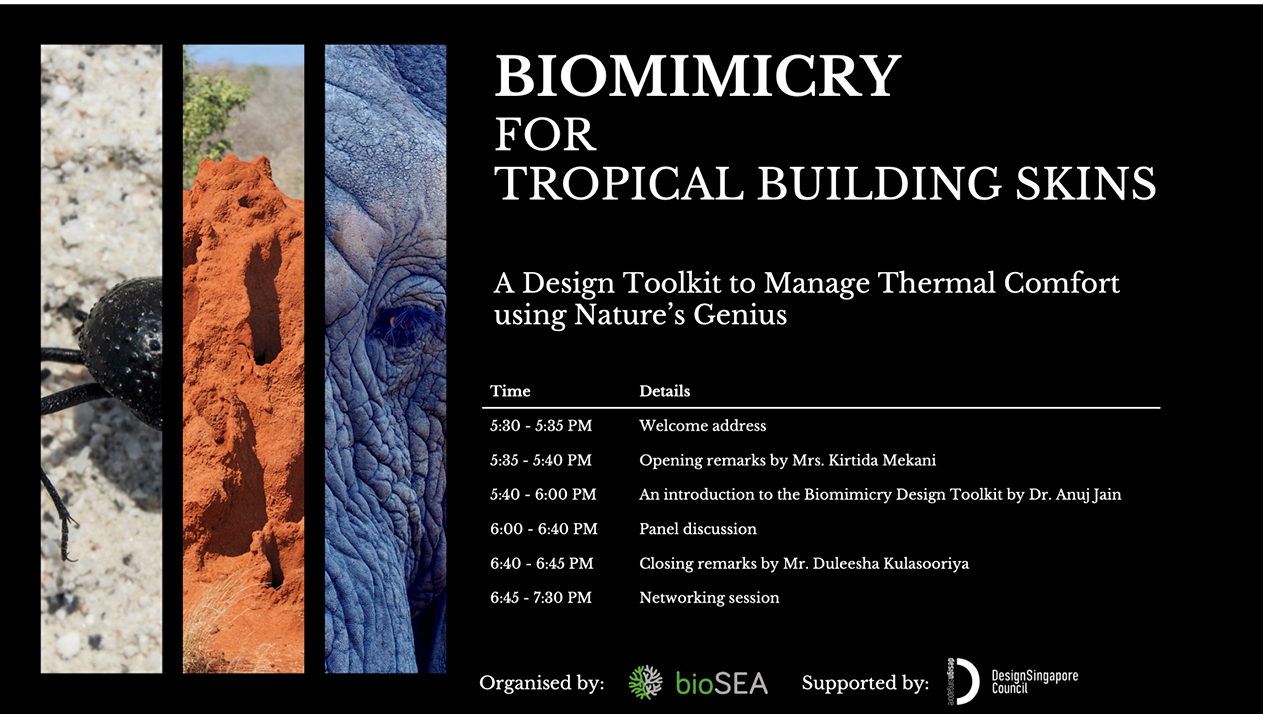
The event was kickstarted by Mrs Kirtida Mekani, co-founder of the Biomimicry Singapore Network. Mrs Mekani noted that despite the popularity of biomimicry design in USA and Europe, this was perhaps the first major publication on this subject for the built environment in Singapore and the wider ASEAN region. She highlighted how Nature thrives on collaboration and in a similar vein, the creation of the toolkit was a celebration of joint efforts from across the globe. She hoped the toolkit would bridge gaps between academia and industry for the built environment and looked forward to the Biomimicry Singapore Network supporting these ventures. She ended by emphasising that Singapore is well placed to lead this effort of learning from Nature as it is already in pursuit of becoming a City in Nature and it would not be far flung to take its pursuits a step further and become the City of Nature-Inspired Innovation.
Mrs Mekani’s inspiring opening remarks were followed by Dr Anuj Jain’s introduction to the Biomimicry Design Toolkit. As the founding director, principal ecologist and biomimic at bioSEA, Dr Jain helmed the efforts behind creating the toolkit. He started off his presentation with a short video priming the audience to Biomimicry and the possibilities and solutions it has to offer to the built environment in the face of ever-rising temperatures.
Dr Jain then chronicled his journey into Biomimicry which started with his awe of the Namib Beetle’s fog-basking strategies nearly 20 years ago. He spoke about his affinity for Nature and why he felt integrating nature should be intrinsic in urban cityspaces. He put a spotlight on how this is already happening through Nature-inclusive architecture in Singapore and revitalised landscapes such as Bishan-Ang Mo Kio Park.
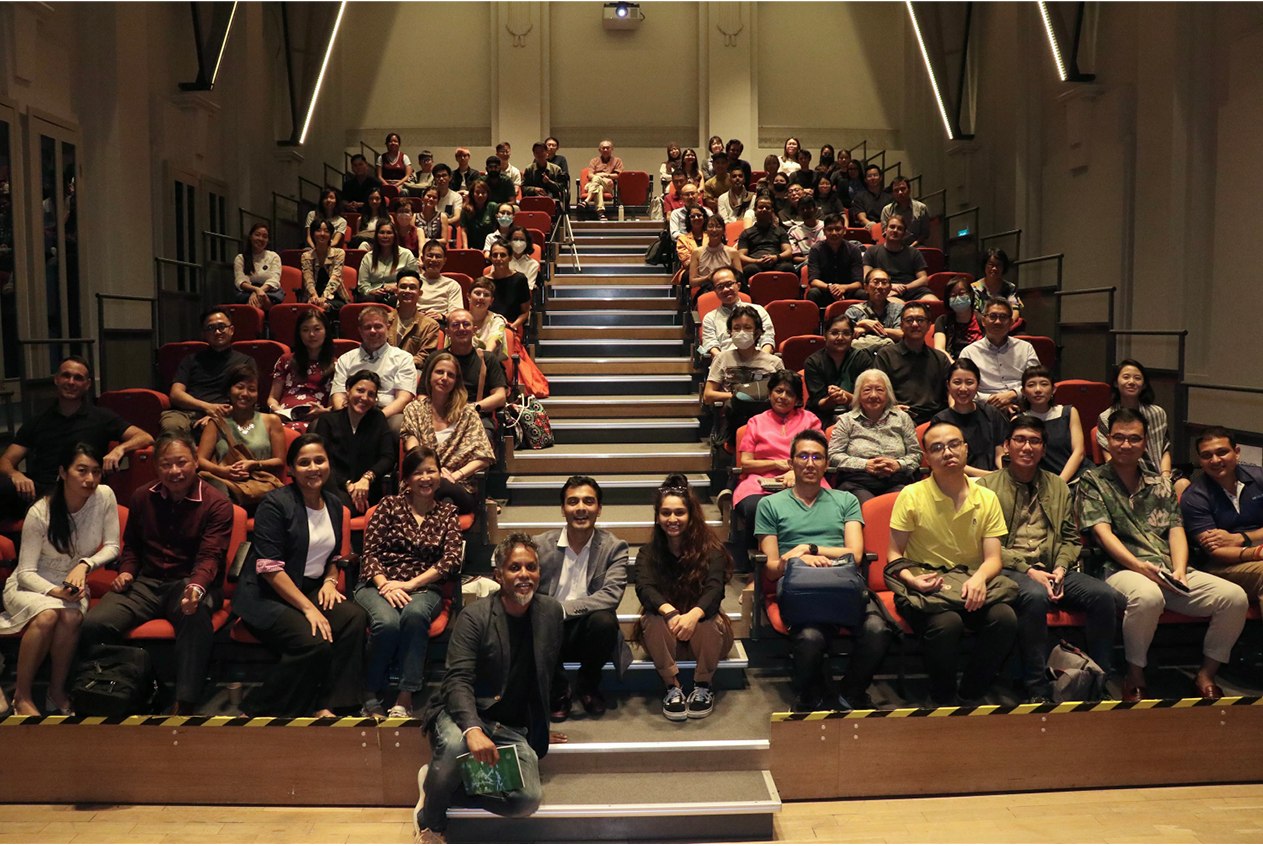
This neatly segued Dr Jain into the introduction of the toolkit. After thanking the co-authors and contributors to the toolkit, he brought to light how air conditioning services were a double edged sword in that they helped regulate temperatures and accounted for the physical and mental well being of people but were conversely one of the biggest contributors to carbon emissions and climate change itself. This very problem provided the toolkit with its ‘Why’ and Biomimicry was the novel and underutilised solution that the Toolkit hoped to elucidate.
Dr Jain addressed the lack of industry familiarity with the concept of Biomimicry and walked the audience through the differences between Biomimicry, Biophilia, Biomorphism, and Bio-utilization. He then dived into the key functions of architectural design that Biomimicry could address in relation to thermoregulation. He brought into focus bioSEA’s 3 wall panel design explorations inspired by Elephant Skin, the Namib Desert Beetle and Termite Mounds respectively. Prototypes of these facade designs were put on display during the event for audiences to get a better idea of the multiple simulations and trials it took to get the facade to perform its function optimally.
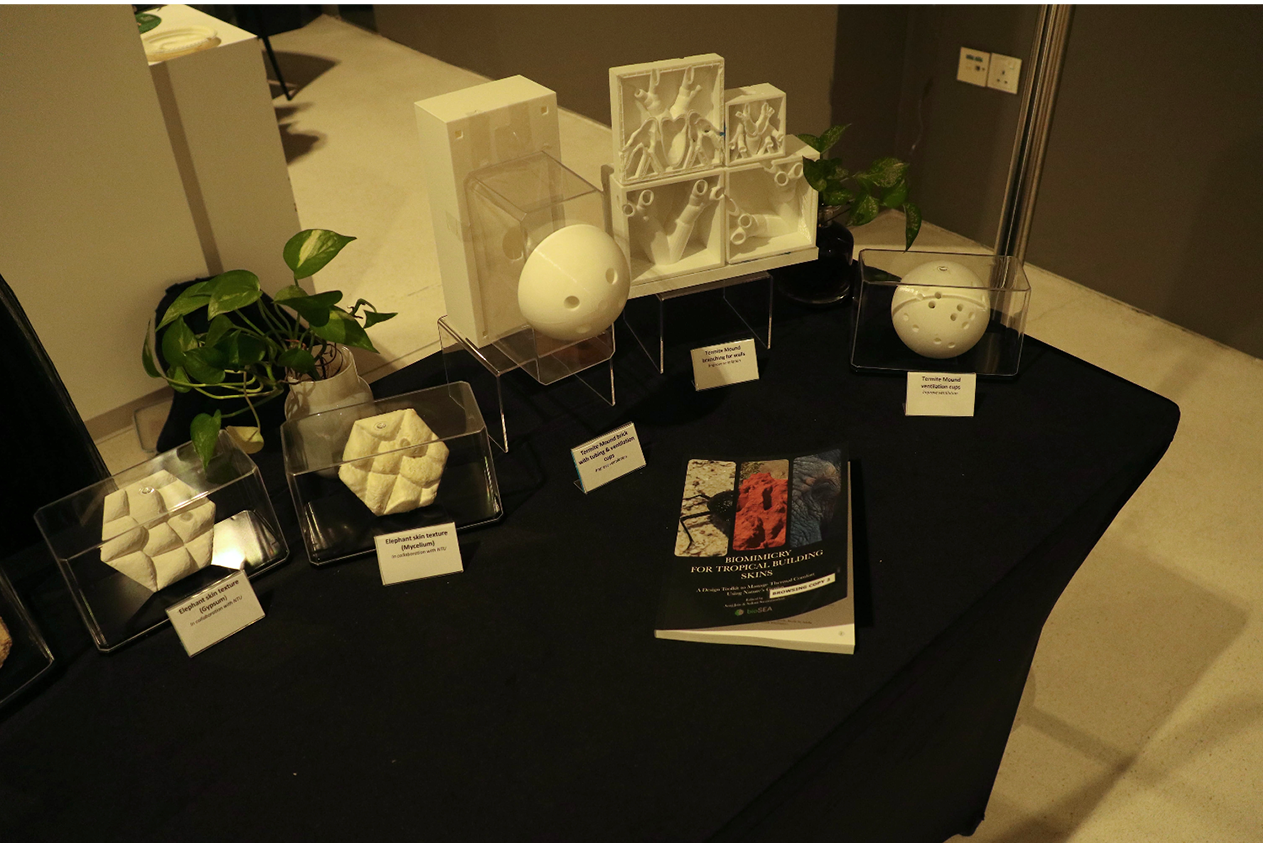
Dr Jain emphasised that other than showcasing bioSEA’s collaborative efforts to create novel designs, the Toolkit also acts as an inventory of project examples from across the globe that use biomimetic solutions to cool buildings at different scales i.e. wall panel, material, building. The repository of projects serves to provide inspiration for anyone who wishes to create their own biomimetic facades and the subsequent chapters provide guidance on how to go about doing it at an industry level.
Dr Jain ended his presentation by expressing his aspirations for Biomimicry as a design tool and played a video featuring the Elephant Skin facade design by the bioSEA team. With the Toolkit now launched, he hoped that it would spark discourse and start the ball rolling on the creation of more biomimetic building projects in the Southeast Asian sphere.
Dr Jain’s speech was immediately followed by a panel discussion which discussed the opportunities and challenges for the adoption of biomimicry in the built environment. The panel featured Dr. Anuj Jain, Mr. Richard Hassell, Dr. Lena Chan, Mr. Kuan Chee Yung, and Mr. Jeff Carnell and was moderated by Dr Zheng Kai.
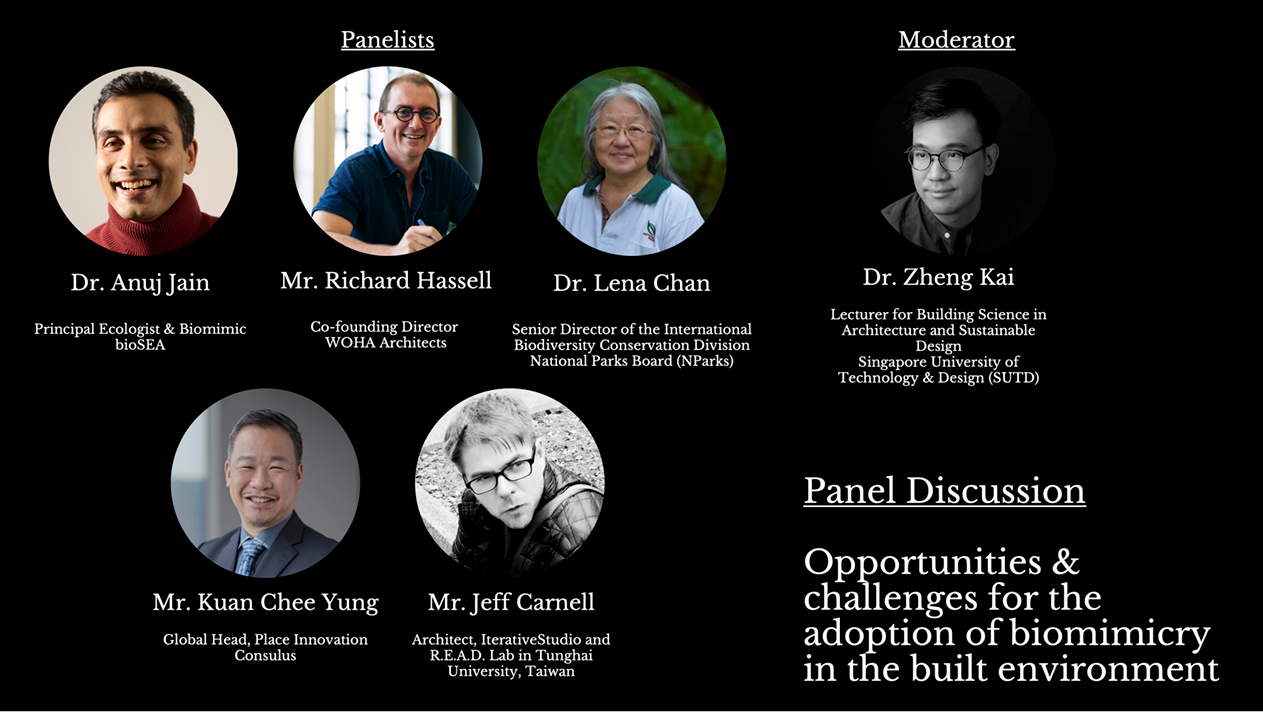
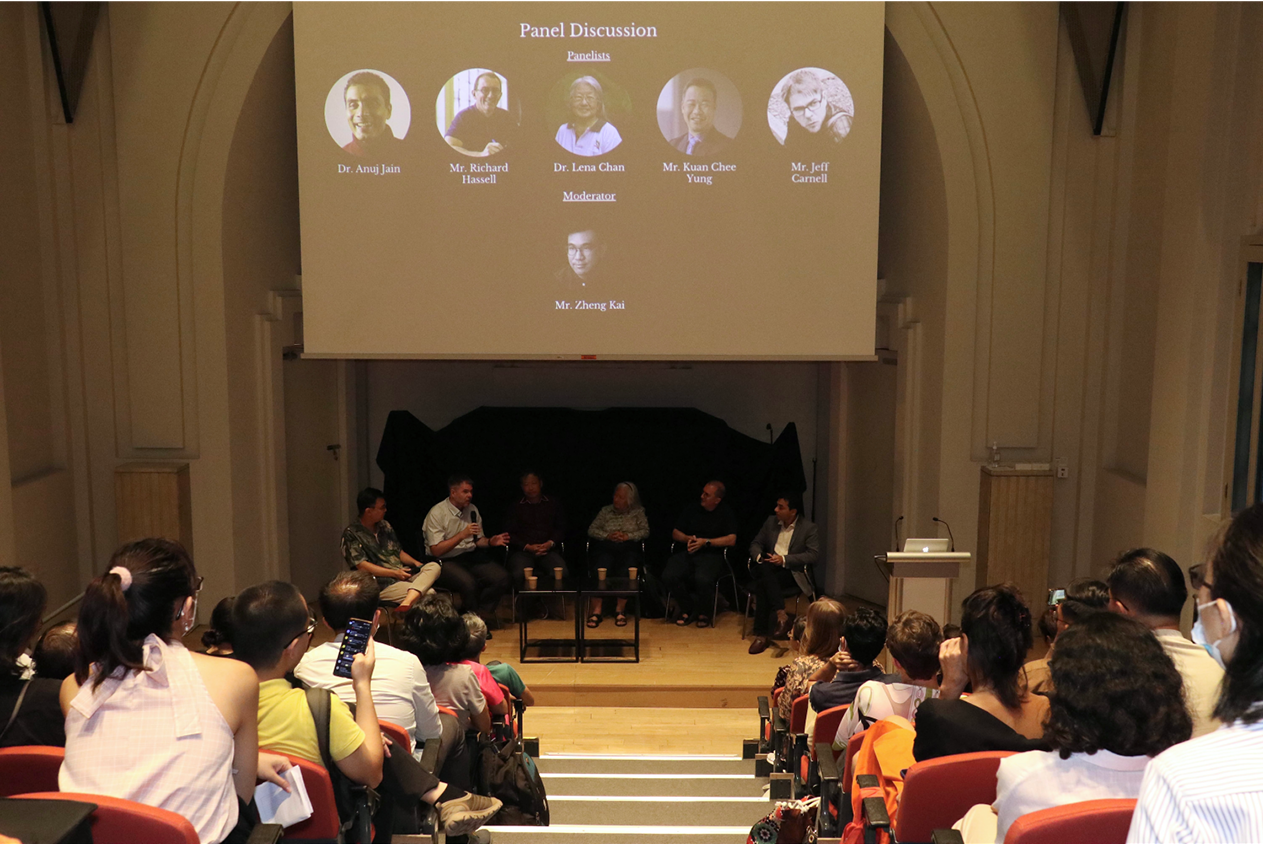
The panel opened with introductions of each panellist and their involvement in biomimicry. Notably, Mr Carnell elaborated on his work which looked at learning from and mimicking trees and their ability to withstand great amounts of force due to Taiwan being earthquake prone. He talked about creating resilient buildings able to sustain similar amounts of force and balancing that with the need for lightweight structures. Mr Kuan on a similar vein, provided insight into his work in Sarawak where his team looked at mimicking the functions of mangroves in waterfront design establishments to create reinforced shorelines. Dr Zheng Kai then got the ball rolling on the panel discussion and here are some significant quotes as follows –
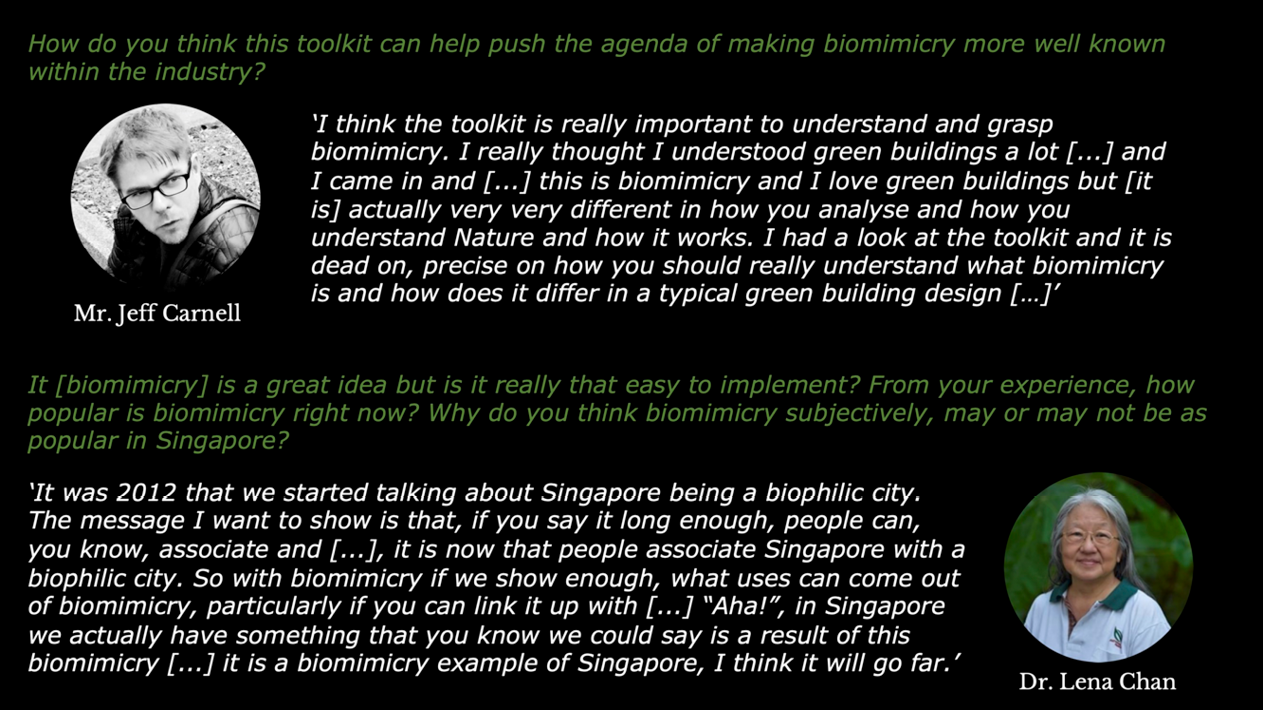
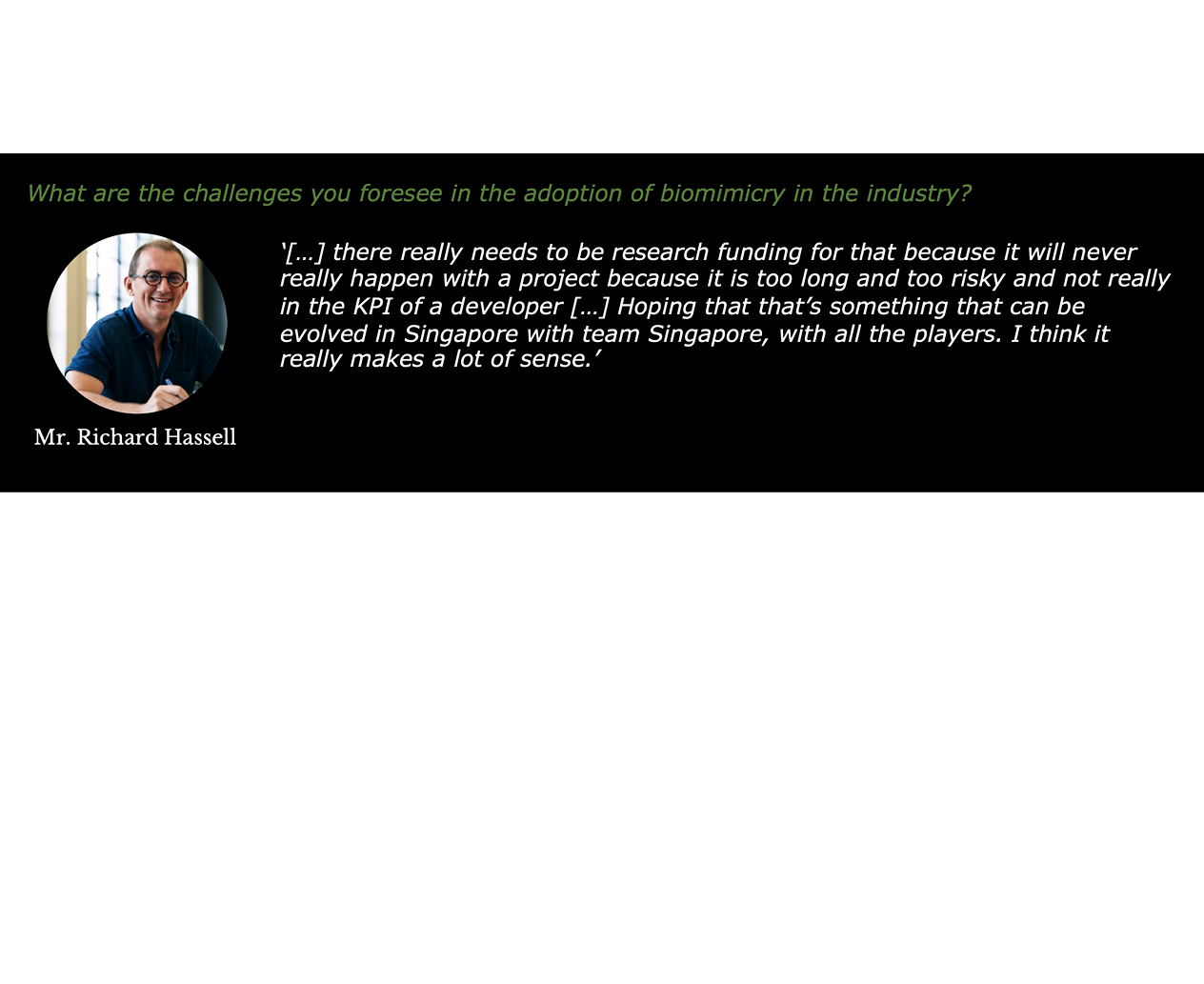
The panel ended with everyone expressing their hopes for biomimicry to grow in popularity and incentives being put in place to encourage its mainstreaming in the industry.
The event was brought to a close by Mr Duleesha Kulasooriya, the Executive Director for Deloitte’s Center for the Edge, Asia Pacific, and an Evaluation Panellist for the Good Design Research Initiative. Having seen the toolkit develop from its early stages as a proposal to now, a full fledged published toolkit, he congratulated the bioSEA team on their endeavour and expressed his gratitude to the DesignSingapore Council and GDR for their support throughout the process. He believed the next step was the inception of biomimicry pavilions and showcases in Singapore that could encourage professionals to appreciate nature-inspired innovation and aid in its mainstreaming. He was hopeful that the launch of the Biomimicry Design Toolkit would inspire designers and architects alike to create more sustainable and innovative designs, inspired by nature in the future to come.
That concluded the event which was then followed by a networking session. The event was emceed by Mrs. Saloni Swaminathan, also the co-editor of the toolkit.
We hope that everyone walked away from the event a little bit more curious, and a little bit more inspired to become a biomimetic designer.
Purchase the Toolkit
If you are interested in purchasing a copy of the toolkit, please click on the link below.
